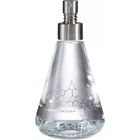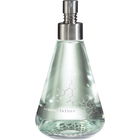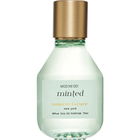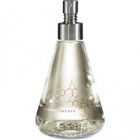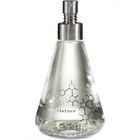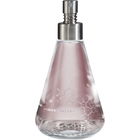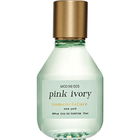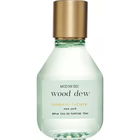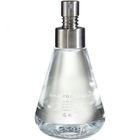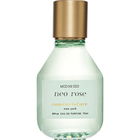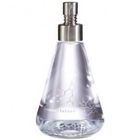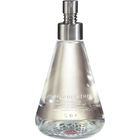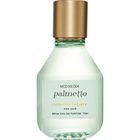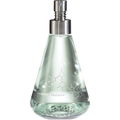12/12/2023

Intersport
115 Reviews
Translated · Show original

Intersport
Top Review
19
Mon Schrebergarten Calone©
Nomenclature, a branch of the brand Aedes de Venustas, dedicated itself at least with the first, flask-inspired bottles filled in Erlenmeyer flasks, and the somewhat forced technical use of a _ symbol between the name syllables, to the frequently used and partly developed by the large fragrance manufacturers synthetic components, such as here, Calone.
Calone, here I can already see rolling eyes, inner reactions like 'I'm out', Calone this unusual and fundamentally completely non-natural, and gladly - as soon as staged in too eccentric proportions - annoying material, which had to slumber for two decades to first slowly emerge in the 80s as a lily of the valley accentuator, but then shaped an apparently unstoppable wave of aquatic fragrances, many of which were probably only made possible by this very Calone, is supposed to be at the center of fluo_ral.
Even though 'molecule fragrances' have not been a novelty since Helmut Lang's Velviona (2001), and certainly not in 2015, I at least give the New Yorkers a small dose of chutzpah for placing this fragrance ingredient at the center. Moreover, Nathalie Feisthauer is an author who has designed accessible-refined with Must de Cartier Pour Homme (2000) and quirky with Series 6 Synthetic, Tar and Soda (2004).
Now, the discrepancy of how supposed fragrance ingredients should smell (think here of any Ambroxan derivatives, Iso-E or Cashmeran opinions) and in 'real life', so to speak in the chemical-social interplay with other components, or in dilution and context, is quite significant - and that is exactly what fluo_ral takes advantage of; anyone expecting sweet, stale water, or artificially melon-like scents will be thoroughly misled - fluo_ral is as far removed from figurative aquaticity as New York is from the Mediterranean, rather it seems to me that Mme Feisthauer might want to refer back to the earliest uses of Calone, where the accentuation of lily of the valley notes was aimed at the local meadows, gardens, and green spaces. fluo_ral is more of an English or Central European vegetable garden in late spring, everything here revolves around rhubarb and tomato leaf, crisp, transparent, unmistakable, refreshed and acidulated with a hint of cassis buds.
The pairing of this fruit/vegetable trio seems almost self-evident, but it perhaps makes fluo_ral a bit lighter and more transparent than other rhubarb fragrances. To stay more or less in-house, Aedes de Venustas' Signature (2012) by Duchaufour certainly served as a reference, as rhubarb has been mentioned as a favored note by the Aedes founders. The novelty bonus of the also Duchaufour-designed, monothematic, milkier Rhubarb (2003) from Comme des Garçons Series 5: Sherbet is certainly no longer present in fluo_ral. I can hardly perceive differences in the actual rhubarb note and do not know if there are fragrance ingredients that are oriented towards British rhubarb variations, German-speaking ones, or others; however, rhubarb seems to be something that, alongside Duchaufour, perfumers like Landi (baroque) or Laudamiel (realistic or abstract) have repeatedly placed at the center of their works.
But how does it stand with the Calone, to which fluo_ral is ultimately dedicated? On the skin, no trace of it, fans might feel cheated by the fragrance ingredient, but the next day on the paper blotter it finally shows itself, in outlines and only in a correspondingly reduced intensity with all its artificial facets, which again fit into the original concept of the series. The mentioned _ symbol has since been omitted by the brand, and the newer releases seem to be filled in more conventional bottles.
Calone, here I can already see rolling eyes, inner reactions like 'I'm out', Calone this unusual and fundamentally completely non-natural, and gladly - as soon as staged in too eccentric proportions - annoying material, which had to slumber for two decades to first slowly emerge in the 80s as a lily of the valley accentuator, but then shaped an apparently unstoppable wave of aquatic fragrances, many of which were probably only made possible by this very Calone, is supposed to be at the center of fluo_ral.
Even though 'molecule fragrances' have not been a novelty since Helmut Lang's Velviona (2001), and certainly not in 2015, I at least give the New Yorkers a small dose of chutzpah for placing this fragrance ingredient at the center. Moreover, Nathalie Feisthauer is an author who has designed accessible-refined with Must de Cartier Pour Homme (2000) and quirky with Series 6 Synthetic, Tar and Soda (2004).
Now, the discrepancy of how supposed fragrance ingredients should smell (think here of any Ambroxan derivatives, Iso-E or Cashmeran opinions) and in 'real life', so to speak in the chemical-social interplay with other components, or in dilution and context, is quite significant - and that is exactly what fluo_ral takes advantage of; anyone expecting sweet, stale water, or artificially melon-like scents will be thoroughly misled - fluo_ral is as far removed from figurative aquaticity as New York is from the Mediterranean, rather it seems to me that Mme Feisthauer might want to refer back to the earliest uses of Calone, where the accentuation of lily of the valley notes was aimed at the local meadows, gardens, and green spaces. fluo_ral is more of an English or Central European vegetable garden in late spring, everything here revolves around rhubarb and tomato leaf, crisp, transparent, unmistakable, refreshed and acidulated with a hint of cassis buds.
The pairing of this fruit/vegetable trio seems almost self-evident, but it perhaps makes fluo_ral a bit lighter and more transparent than other rhubarb fragrances. To stay more or less in-house, Aedes de Venustas' Signature (2012) by Duchaufour certainly served as a reference, as rhubarb has been mentioned as a favored note by the Aedes founders. The novelty bonus of the also Duchaufour-designed, monothematic, milkier Rhubarb (2003) from Comme des Garçons Series 5: Sherbet is certainly no longer present in fluo_ral. I can hardly perceive differences in the actual rhubarb note and do not know if there are fragrance ingredients that are oriented towards British rhubarb variations, German-speaking ones, or others; however, rhubarb seems to be something that, alongside Duchaufour, perfumers like Landi (baroque) or Laudamiel (realistic or abstract) have repeatedly placed at the center of their works.
But how does it stand with the Calone, to which fluo_ral is ultimately dedicated? On the skin, no trace of it, fans might feel cheated by the fragrance ingredient, but the next day on the paper blotter it finally shows itself, in outlines and only in a correspondingly reduced intensity with all its artificial facets, which again fit into the original concept of the series. The mentioned _ symbol has since been omitted by the brand, and the newer releases seem to be filled in more conventional bottles.
13 Comments







 Rhubarb
Rhubarb Rose
Rose Blackcurrant bud
Blackcurrant bud Calone
Calone Cedarwood
Cedarwood Pink pepper
Pink pepper Tomato leaf
Tomato leaf Somalian frankincense
Somalian frankincense


 Plumediris
Plumediris Stulle
Stulle Ergoproxy
Ergoproxy Heikeso
Heikeso SaGa
SaGa Zauber600
Zauber600 IsabelleV
IsabelleV Bookie
Bookie Waterbubbles
Waterbubbles Walker
Walker